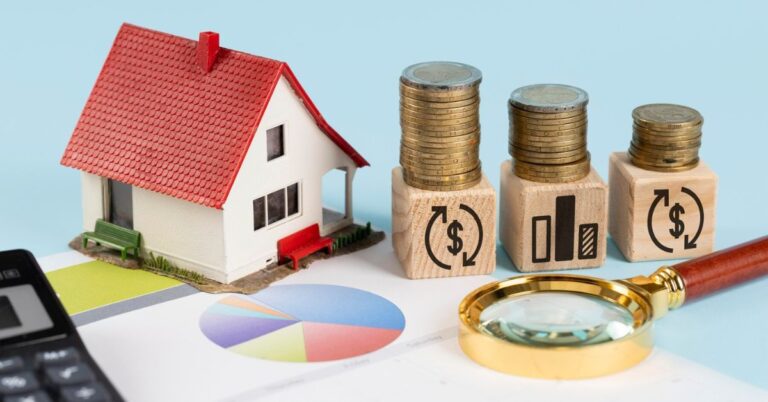Accessory Dwelling Units, commonly known as ADUs, are changing how homeowners view space, property value, and income opportunities. These tiny, self-contained homes—often built in backyards or attached to existing residences—have surged in popularity due to zoning changes and shifting housing needs. While upfront construction costs are usually the main focus, the broader financial implications are just as important. From property taxes and utility considerations to long-term rental income, ADUs are more than just a physical addition to a home. We will explore how these structures impact homeowners financially long after the building phase is complete. The appeal of ADUs extends into future planning, offering flexibility that traditional home additions may lack. Whether used to house relatives, earn rental income, or increase property resale value, ADUs provide evolving financial options. This extended impact often determines whether an ADU is a smart decision—not just the initial expense.
Understanding ADU Construction as a Long-Term Investment
- Rental Revenue and Ongoing Cash Flow Potential
One of the most significant financial incentives for building an ADU is the opportunity to generate rental income. As housing demand continues to rise in urban and suburban areas, many homeowners find that ADUs provide a practical way to participate in the rental market. Depending on local ordinances, these units can be rented out for long-term housing or used as short-term vacation rentals. Either way, they offer a steady source of revenue that can offset construction loans, mortgage payments, or property taxes. Even small ADUs can command competitive rates in cities with rising rent prices, especially if they’re well-designed and situated in desirable neighborhoods. Over time, the rental income from an ADU can significantly enhance a homeowner’s financial flexibility. Some use it to save for retirement, while others apply the funds toward future investments or renovations. The key lies in thoughtful planning and understanding how the unit will function within the market and the property’s overall layout.
- Property Taxes, Utilities, and Long-Term Expenses
Beyond initial construction, ADUs introduce a range of ongoing costs that must be factored into any long-term financial strategy. Property taxes are one of the first elements to shift. Since the value of a home typically increases after an ADU is added, tax assessments often rise accordingly. In areas with high property tax rates, this change can be substantial. Additionally, utility expenses may increase, especially if the unit is fully independent with its kitchen, bathroom, and HVAC system. Some municipalities require separate metering for ADUs, which can add initial setup costs and provide more apparent usage and expense tracking. Maintenance is another factor. Like any other dwelling, an ADU will require regular upkeep—plumbing, roofing, appliances, and more—all of which add to the ongoing financial picture. Homeowners must plan for expected and unexpected costs to ensure their ADU remains an asset rather than a burden over time.
- ADUs and Property Value Appreciation
ADUs can increase overall property value, making them a powerful wealth-building tool. In many cases, properties with permitted, well-constructed ADUs attract more interest on the real estate market. Prospective buyers often view these additions as income-generating opportunities or flexible spaces for family members. The presence of an ADU can set a home apart from others in the same price range, especially in regions where housing inventory is low. That said, the quality of the construction, adherence to local codes, and how well the ADU integrates with the main property all play a role in how much value is ultimately added. Working with an experienced builder who understands local zoning laws maximizes this potential. For homeowners in the Pacific Northwest, partnering with a seasoned ADU contractor in Portland can help ensure the project aligns with current codes and long-term property goals. These considerations ultimately affect not just the home’s resale value, but how quickly it sells and to whom.
- Financial Flexibility and Lifestyle Options
One often-overlooked benefit of building an ADU is its lifestyle flexibility, which can also carry financial advantages. For example, homeowners may choose to live in the ADU while renting out the main house, especially during retirement or while traveling. Others may use the unit as a temporary residence while renovating the primary home. This adaptability can reduce the need for costly relocations, storage, or interim housing during significant life transitions. Additionally, having an on-site dwelling can support multi-generational living without sacrificing privacy, allowing families to share expenses like utilities, internet, and property maintenance. As living situations evolve—whether through aging parents moving in or adult children returning home—an ADU provides an adaptable space that responds to changing needs. This can alleviate financial stress by avoiding assisted living costs or off-site rentals. Ultimately, the unit’s ability to shift functions over time enhances its long-term value and utility beyond what square footage alone might suggest.
While much of the attention surrounding ADU projects focuses on design and construction, the lasting financial effects deserve equal consideration. Building an ADU is not just a real estate enhancement—it’s a dynamic asset that offers income potential, adaptability, and increased market value. However, it also comes with its responsibilities, from property tax implications to maintenance demands. The decision to add an ADU should be based on a clear understanding of both short-term budgets and long-term financial goals. With proper planning, these units can provide meaningful returns and open new possibilities for how homeowners use their space. Whether serving as a rental unit, a guesthouse, or a place for family, ADUs bring value that continues well after construction ends. They invite homeowners to think creatively about land use and housing options while preparing for the future in a financially sustainable way.

